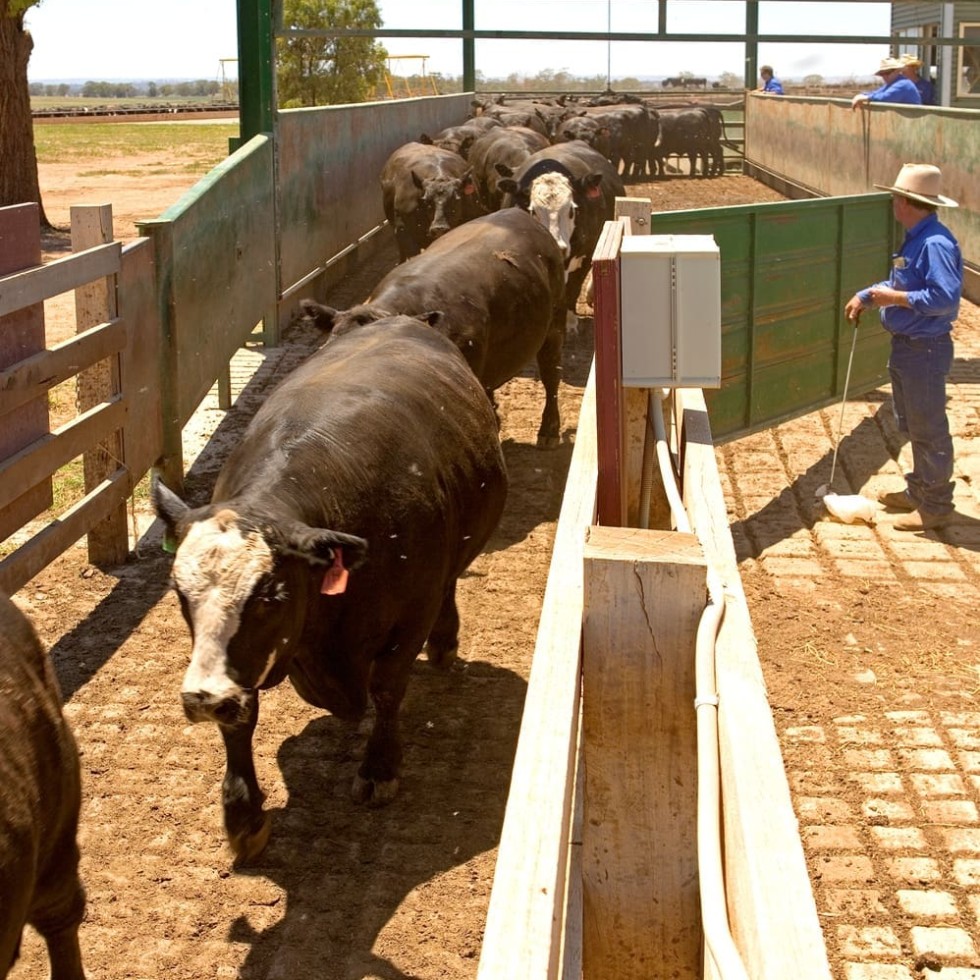 Just as feeding profitability was beginning to look more encouraging again, a rise in feeder steer and ration costs has sent Beef Central’s latest trading budget result scurrying back into red ink territory.
Just as feeding profitability was beginning to look more encouraging again, a rise in feeder steer and ration costs has sent Beef Central’s latest trading budget result scurrying back into red ink territory.
Our latest breakeven calculation has delivered a negative $40 trading result on our typical shortfed beast (see Beef Central’s full criteria at bottom of page) entering the feedyard yesterday, and closing-out after 105 days on feed in late September.
In comparison, Beef Central’s two most recent trading budgets calculated on May 31 and May 16 produced a ‘line-ball’ result and a +$11 profit, respectively.
For yesterday’s trading budget, we’ve adjusted the steer buy price upwards to 195c/kg, up 5c on the back of recent rainfall and the softening in the value of the A$ offering the potential, at least, for improved trading margins for grainfed processors.
That’s the highest feeder price since the April spike, which is quite unusual for this time of year. This time 12 months ago, the number was still 180c, heading down to 175c in July.
The Eastern Young Cattle Indicator has captured the steady recent improvement in feeder cattle values, lifting 13c/kg from its recent low (362.5c) a fortnight ago to finish at 375.5c yesterday.
Pricing yesterday’s P&L budget feeder steer (flatback crossbred, ex-Darling Downs) at 195c values him at $877 – $22 more than a fortnight ago, but still some way from our year-opening, January 9 steer value of $967.
Finished ration price applied in yesterday’s calculation was $250/tonne, up $10/t on figures applied a month ago, given the solid start to the winter season and global price movements. Using Beef Central’s recent feedgrain update provided by trader, Luke Walker, current feedgrain prices delivered Darling Downs indicate feed wheat $230/t and sorghum $180.
That produces a total feeding cost of $392. The ration price adjustment gives a total production cost yesterday calculated at $1361, a $21 rise on the May 31 figure, and only likely to rise further.
Applying these variables to the formula suggests a breakeven figure at 385c/kg dressed weight, up 5c from where we sat a fortnight ago, based on a 360kg hot dressed carcase.
That figure sits beside the forward contract market for 100-day grainfeds with major processors, currently sitting between 370c and 380c, which translates into a loss of approximately $40 a head on yesterday’s trading budget exercise. Apply typical meatworks downgrades experienced on shortfed cattle, and the budget could easily be a further $10/head in the red.
Two to three weeks of wet weather in Southern Queensland has obviously had an impact on feeder steer supply and value, with several selling centres missing two consecutive sales, or operating on greatly reduced numbers. This has been the variable with the single largest bearing on yesterday’s outcome.
Our current spread-sheet shows a cost of gain in the southeast Queensland market, and using our chosen variables on 100-day cattle, in the mid-180s (c/kg, based on 210kg gain over 105 days, costing 391c). That COG figure, which has changed little for some time, is reasonably close to the cost of feeder cattle ex Southern Queensland, as they stand today.
Readers should note, however, that COG in southern states is currently likely to be a little less than this, perhaps in the 165-170c/kg range, due to currently lower grain price, making the southern feeding proposition a little more attractive.
Looking back to our equivalent trading budget from this time last year, feeders going on feed on June 15 had a breakeven figure of 373c, a good 10c/kg below where they sit today, whereas the forward contract price a year ago was quite depressed, sitting in the 350-360c range. Currency value this time last year was around 106c.
Spot market profitability
Yesterday’s SEQ processor grids for spot market 100-day grainfed ox were generally around 370-375c for milk and two-tooth cattle, depending on positions with their contracted cattle. Cattle killed this week, going on feed back in late-February and forward-bought then by processors in the low 370s, are currently line-ball in profit for processors with where the spot market is today.
That’s a lot better than early April’s result when early January forward-bought cattle for slaughter cost around 400c/kg, meaning losses on those cattle to processors of about $105 a head.
One point to ponder is the fact that recent unsettled weather has not been ideal for feedlot starter cattle, and may be creating some early respiratory-based performance issues. But anecdotally, at least, lotfeeders in the nation’s most concentrated feeding area within a couple of hundred kilometres radius of Dalby say appropriately managed cattle have handled the recent variable conditions well.
- Beef Central's regular 100-day grainfed breakeven scenario is based on a representative standard set of production variables, ex Darling Downs. They include a 356kg dressed weight; ADG of 2kg; consumption 15kg and a NFE ratio of 7.5:1 (as fed); $25 freight; typical implant program; interest component. It is important to note that variations exist across production models (feed conversion, daily gain, mortality, morbidity, carcase specification); from feedlot to feedlot; and between mobs of cattle. For a more specific performance forecast on a given mob of cattle, consult with your preferred custom feeder.



HAVE YOUR SAY